Papers by Shajwan Nariman Fatah Raza
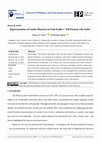
Journal of Philology and Educational Sciences, 2023
Frida Kahlo's "Self Portrait with Stalin" 1954, has been related to biographical, cultural, and n... more Frida Kahlo's "Self Portrait with Stalin" 1954, has been related to biographical, cultural, and national references. It is examined as an allegory of the artist's troubled personal relationships with political figures; her antagonism towards the Soviet Union leader, Joseph Stalin, her affair with the Marxist revolutionary, Leon Trotsky, who was later assassinated by Stalin, and her in-volvement in the communist party. Moreover, critics have shed light on Kahlo's factual refer-ences, such as her Tehuana dress which is seen as an appreciation for her Mexican heritage and a disguise for her physical problems. In this paper, we try to disregard these conventions; instead, we focus on several hidden premises in the painting, such as power relations (Michel Foucault) and gender problems (Helene Cixous). These concepts are explored through the semiotic reading of the details, including the art artwork's composition, texture, and elements.
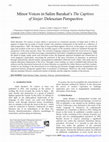
Koya University Journal of Humanities and Social Science, 2023
Salim Barakat's The Captives of Sinjar(2016), is perceived as a historical narrative o... more Salim Barakat's The Captives of Sinjar(2016), is perceived as a historical narrative of Sinjar back in 2014. It appears to depict the accounts of Yazidi women who endured victimization at the hands of a collective of male perpetrators –ISIS –the Islamic State in Iraq and Sham fighters. However, in this paper, we unravel the signs and symbols of the text to show the invisible aspects of the incidents which are mediated through the perspective of the male narrator, Sarat. The narrative language employed within the novel serves to engage readers at a cognitive level that encourages contemplation and fosters a heightened mental engagement. With the blend of magic reality mode and surrealist scenes; the linguistic approach facilitates the construction of vivid imageries, particularly concerning the portrayal of the mass executions of characters, as portrayed through meticulously selected artistic representations embedded within the work’s fabric. This study aims to explore alternative dimensions of the novel. Through a close reading, we seek to establish links between the analysis and the theoretical framework of minor literature as examined by Gilles Deleuze and Felix Guattari. Central to our findings is the discernment of an enduring and dynamic struggle between marginalized and oppressed factions, juxtaposed against those in positions of dominance. Moreover, the study examines the intricate interplay between constructed notions of identity and the subjective realities of the persons.
Journal of Philology and Educational Sciences, 2024
Krzysztof Kieślowski’s 1988 Polish production, A Short Film About Love, has inspired diverse inte... more Krzysztof Kieślowski’s 1988 Polish production, A Short Film About Love, has inspired diverse interpretations related to the themes of human isolation, relationships, and social contexts. This paper examines the film through Lacanian lens, focusing particularly on the concept of the gaze as it unravels the complex interactions between the male protagonist, Tomek, and his female coun-terpart, Magda. Furthermore, the study decodes the mise-en-scène and other visual elements to explore philosophical issues of desire, drawing on the works of Alain Badiou and Slavoj Žižek. By analyzing Kieślowski's cinematography, this paper aims to uncover the connections between the act of gazing and its integration into Lacanian psychoanalytic registers: the Imaginary, Sym-bolic, and Real.
Journal Proglas, 2024
In this paper, I analyze Thomas Hardy's "Neutral Tones" (1876), which has traditionally been inte... more In this paper, I analyze Thomas Hardy's "Neutral Tones" (1876), which has traditionally been interpreted through historical and personal lenses related to the poet's voice and the nineteenthcentury context. Di verging from these perspectives, my semiotic reading focuses on the aesthetics of the language, revealing hidden aspects and deeper layers of meaning within the text. This study explores literary devices such as metaphor (Friedrich Nietzsche and Jacques Derrida), prosopopoeia, and ekphrasis, also exploring the theoretical concepts of male/female gazes (Laura Mulvey) and power relations (Michel Foucault). The findings suggest that the speaker's identity is not confined to a male persona, and that power relations and the interplay of gazes shape the dynamics between the characters.
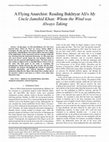
Journal of University of Human Development, 2024
In this paper, we will read Bakhtyar Ali's My Uncle Jamshid Khan: Whom the Wind was Always Taking... more In this paper, we will read Bakhtyar Ali's My Uncle Jamshid Khan: Whom the Wind was Always Taking (2009) to investigate the plot and the characters depicted in the fiction, particularly, Jamshid Khan. Our analysis follows the close reading of the implications of the expressions and the concepts within the text. Drawing from the theoretical discussion, we will argue that Ali's novel doesn't merely depict the real incidents related to Kurds, but also, presents philosophical issues. The book seems to take readers to higher levels as Jamshid Khan is blown away by the wind. The focal point of our study is examining the metaphysical relation between the male persona and the wind. Eventually, the analysis will highlight the notions of anarchism, imagined communities, and cultural hegemony, which are integrated within the text. Hence, this article shows another side of the narrative which is read more as a fictive work rather than historical events.
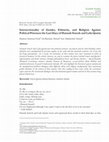
Kurdish Studies, 2024
Hannah Senesh and Laila Qasim were two political activists, one Jewish and the other Kurdish, who... more Hannah Senesh and Laila Qasim were two political activists, one Jewish and the other Kurdish, whose identities were manipulated by previous regimes in the early and late twentieth centuries: the Nazi and the Iraqi governments. As a result, the narratives of these women have been recounted in terms of historical incidents. In this article, however, we seek to examine the factors behind Senesh and Qasim's imprisonment and death sentences through philosophical lenses and literary theories-intersectionality (Kimberlé Crenshaw), women's identity (Simone de Beauvoir), sexual politics (Kate Millett) and subaltern discourse (Gayatri Chakravorty Spivak). We also highlight the theoretical aspects and present the manufactured political ideologies from different ethnic and religious backgrounds that constructed gender identities in the context of these women. Our close reading of these issues shows the existential aspect and also the constructed ideologies that discriminated against women and led to these women being placed behind bars.
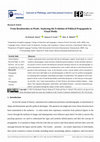
Journal of Philology and Educational Sciences, 2023
Leaders, particularly those associated with fascist ideologies, employ visual media as a tool to ... more Leaders, particularly those associated with fascist ideologies, employ visual media as a tool to construct and propagate certain doctrines within the general populace. In this scholarly endeavor, our pursuit revolves around elucidating the profound interplay between art and photography as potent instruments of persuasive communication. First, readers will meet a brief historical background of both mechanisms. Later, in the literature review, several studies will be presented in which critics have shed light on art and photography as effective ways for political propaganda, by analyzing their synergistic relationship and impact on individuals. The argument will be integrated with the works of both Roland Bathes and Walter Benjamin. In the final part of this paper, we provide a few visual representations of both Western and Eastern political figures-King Henry VIII, Napoleon Bonaparte, Adolf Hitler, and Saddam Husseinwho have framed the population's perception through the impact of their artistic weaponry.
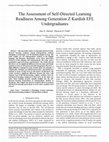
Journal of University of Human Development, 2023
The aim of this study is to determine the level of selfdirected learning readiness among undergra... more The aim of this study is to determine the level of selfdirected learning readiness among undergraduate students belonging to Generation Z in the Kurdistan Region of Iraq. The study sample was 225 undergraduate students in the English language and literature departments across three universities located in Erbil, Halabja, and Sulaymaniyah. The study used a quantitative approach using a questionnaire. The results showed that there was no significant difference between male and female students in terms of self-control and self-management. However, a slight difference emerged in terms of their desire for learning. A considerable variation was found between first-and fourth-year students in terms of their level of self-control. Furthermore, the results revealed a significant difference between the cities, with students from Erbil demonstrating a higher readiness level for self-directed learning compared to their peers in the other two cities. These findings provide valuable insights into the selfdirected learning preparedness of undergraduate students in Kurdistan. They suggest the need for targeted efforts to promote self-directed learning, particularly in areas where readiness level is lower.
Fashion Highlight, 2024
Toile de Jouy, a distinctive textile associated with the world of fashion, originated in France d... more Toile de Jouy, a distinctive textile associated with the world of fashion, originated in France during the 18th century. Initially embraced by the aristocratic class, it has since transcended social boundaries to become a prevalent phenomenon in contemporary society. In this paper, I will explore the underlying themes that highlight the social dynamics depicted in the narratives portrayed on this fabric. From a conceptual perspective, this study aims to illustrate the intrinsic relationship between the labor of the proletariat and the consumption patterns of the bourgeoisie as reflected in Toile de Jouy. Drawing upon the theoretical frameworks of Karl Marx and Jean Baudrillard, I will investigate the interrelation between fashion, means of production, consumer conduct, and simulated phenomena.

Agathos: An International Review of the Humanities and Social Sciences, 2024
Thomas Hardy'' The Ruined Maid (1866), has been extensively examined within the context of the ni... more Thomas Hardy'' The Ruined Maid (1866), has been extensively examined within the context of the nineteenth century. It is often regarded as a representation of social themes during the Victorian era, the plight of working-class women as victims of sexual exploitation, the depiction of fallen women, the challenges of prostitution, and the incorporation of local attributes associated with the Dorset dialect. Moreover, the text's discourse is typically interpreted as a dialogue occurring between two characters, namely Melia and an unknown speaker. However, this study introduces a novel perspective by identifying a third character inherent within the recounted interaction. Furthermore, this paper aims to deviate from conventional interpretations, instead, it concentrates on aspects of the verse that pertain to philosophical concepts such as the influence of social ideologies. This objective is achieved by following the semiotic approach; the words are meticulously analyzed to unveil their underlying meanings, drawing inspiration from the works of Ferdinand de Saussure and Roland Barthes. In addition, the notion of the gaze, as expounded by Michel Foucault, is engaged to shed light on the work's implications. The existentialist insights of Jean-Paul Sartre are also linked to the analysis. Furthermore, the poem's exploration of capitalism is informed by the views of Karl Marx, while gender-related aspects are interpreted through the lens of Simone de Beauvoir's theory.

Journal of University of Human Development, 2023
Thomas Hardy's "The Voice" (1914) is written in quatrains and employs a monologue structure. Conv... more Thomas Hardy's "The Voice" (1914) is written in quatrains and employs a monologue structure. Conventionally, it is interpreted as a reflection of the poet's personal experiences, notably his sense of an absent voice and the apparition of his wife, Emma. This study deviates from biographical interpretations, instead, it sheds light on a detailed analysis of the verse's rhetorical elements. Through semiotic reading, I will investigate the process of animating the image of the absent female figure in the work by exploring ekphrasis and prosopopoeia. Therefore, the primary goal of this paper is to examine the poem's inherent aesthetic qualities by decoding the signs and symbols within expressions in the language. This essay shows the essence of the literary devices as the speaker depicts the face of the missing woman, and also, it reveals the paradox related to the timespan which operates dynamically, shifting back and forth between the characters.
Qalaai Zanist Journal, 2024
's "Alone" (1875), has been read biographically; various critics have analyzed this poem as a ref... more 's "Alone" (1875), has been read biographically; various critics have analyzed this poem as a reference to the poet's psychological issues related to his childhood-his troubled relations with his parents. However, this study aims to put such readings aside, instead, it attempts to have a close analysis and exclude the external agents. Through the semiotic approach, we unravel the words and explore the other side of significations, then relate the interpretation to literary theories. In the discussion, the analysis shows the integration of the text with the reader through the narrative "I," the phenomenological theory of reading (Georges Poulet,) and then connect the findings to the works of major theorists of post-structuralism: Jacques Derrida and Roland Barthes.
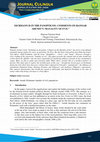
Hannah Arendt's book "Eichmann in Jerusalem: A Report on the Banality of Evil" has led to a hot-d... more Hannah Arendt's book "Eichmann in Jerusalem: A Report on the Banality of Evil" has led to a hot-debated argument among readers for years, in particular, the Jews. She has been criticized for describing the former Nazi officer, Adolf Eichmann, with the terms "thoughtless", "clown", and "banal". However, through a close reading of the expression "banality of evil," this paper presents the rational side of what Arendt has written about the offender, who has been responsible for murdering millions of people in the extermination camps. Many see him as guilty and extremely sinful. While others consider him as a heedless follower of fascism. This study aims to explore the invisible parts of this casethrough the Jewish gazes on Eichmann during his trial which show the power relation that is depicted in Foucault's "panopticism", the influence of nationalism (Immanuel Kant), Ideology (Gramsci and Althusser), and obedience (Milgram's experiment). This analysis demonstrates that Arendt has turned to philosophy and depicted Eichmann in his state of nature rather than being a German or a Nazi officer.
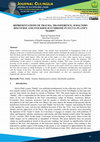
Sylvia Plath's controversial poem "Daddy" has usually been interpreted in biographical terms as a... more Sylvia Plath's controversial poem "Daddy" has usually been interpreted in biographical terms as an allegory of the poet's troubled relationship with her father and her husband: the numerous references in it to Nazi Germany and the Holocaust are generally understood to be metaphors for the dominant and oppressive characters of these male figures. Thus, the aim of this study is to show other aspects such as trauma, transference, and subaltern discourse in the poem and to open the codes within the language. The methodology of this article is conducted through a semiotic reading. This essay reverses the metaphor, focusing on the speaker's constantly shifting perspectives. And it argues, against the tradition, that the biographical context is of secondary importance: the focus of the poem, which was written in the context of the trial and execution of Adolf Eichmann, is on the speaker's problematic identification and engagement with the trauma of the Jews. The analysis illustrates that it can therefore be understood as a unique and complex critique of Nazi ideology and social indoctrination, as they are experienced physically, linguistically, and psychologically.



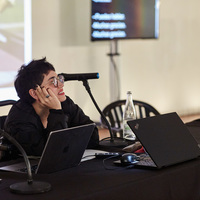




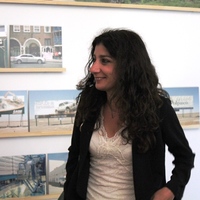


Uploads
Papers by Shajwan Nariman Fatah Raza